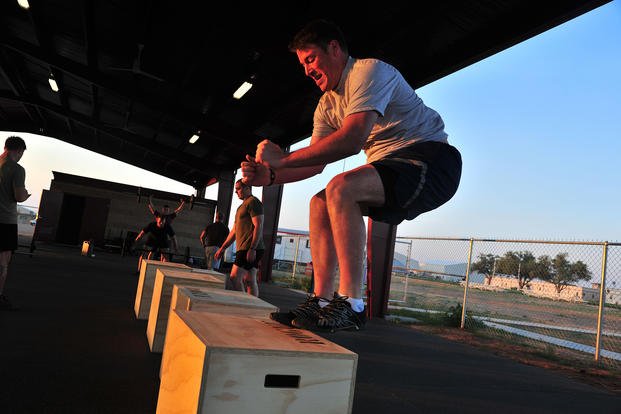Hey, Stew. I am working on a project and was curious what your opinion about today's warrior and Special Ops fitness [is] and which training disciplines best achieve this.
Great question. Over the past decade, special-ops fitness has morphed into a new fitness genre, along with military, police and firefighter fitness, called tactical fitness.
The National Strength and Conditioning Association has created the Tactical Strength and Conditioning Certification Program and hold some of the best conferences to which I have been. Speakers include those physiologists and athletic trainers who train active-duty, special-ops teams such as Delta Force and SEAL Team Six.
But the real progress in training is in the Army, Marines, Navy, Air Force, FBI, Border Patrol and other federal law enforcement programs. Now many of our nation's branches of service are hiring sports team trainers to run their indoctrination (boot camp), special operations maintenance and injury/rehabilitation programs, for instance.
Now back to your specific question about best achieving special-ops fitness standards:
The thing most people have to realize is that the fitness requirements for Navy SEAL Training (BUD/S -- Basic Underwater Demolition/SEAL) is completely different from being an active-duty operating SEAL team member. The BUD/S student must be in peak cardiovascular conditioning for the daily miles of running, swimming and other endurance races.
Muscle stamina also is key for the high repetitions of exercises done in a single day -- after day, after day. Having a strong foundation of strength training is helpful when carrying logs, boats and teammates through challenging events as well.
Once operational, the fitness demands change quite a bit. No longer do you have to train like a triathlete, as you did pre-BUD/S. Now you can focus on strength building and joint mobility while decreasing the impact of miles and miles of running by 50% or more. SEALs typically get more muscle mass and get stronger, but they still maintain a solid cardiovascular training program to perform their job better.
How do you get there? It depends on your athletic history. Some endurance athletes need to add in strength training with weights and calisthenics. Some stronger athletes should focus more on endurance and drop the weights while they train for the fitness tests to get into training.
This is where the community differs a bit. I am more "old school" and believe in doing a calisthenics, longer-running and swimming-based program that is supplemented with weights and full-body exercises like Olympic lifts and athletic movements. However, there is a segment of the spec ops training population that recommends reversing that combination. I have seen both ways produce excellent results -- and you cannot argue with results.
What equipment is required in a tactical approach to fitness?
The only equipment I use is the following: A running trail or 400-meter track, swimming pool or lake/ocean, pull-up bar or playground with monkey bars, and some floor space for the basics. If you are getting into the intermediate and advanced levels of training, it is best to add in a barbell/weights, dumbbells and a TRX for suspension training.
But you can get creative and add sand bags for carrying, logs for lifting and a training partner to carry as a "man down." All are great methods to train and to simulate as much of the tactical events during training as possible.
Stew Smith is a former Navy SEAL and fitness author certified as a Strength and Conditioning Specialist (CSCS) with the National Strength and Conditioning Association. Visit his Fitness eBook store if you're looking to start a workout program to create a healthy lifestyle. Send your fitness questions to stew@stewsmith.com.
Want to Learn More About Military Life?
Whether you're thinking of joining the military, looking for fitness and basic training tips, or keeping up with military life and benefits, Military.com has you covered. Subscribe to Military.com to have military news, updates and resources delivered directly to your inbox.


















